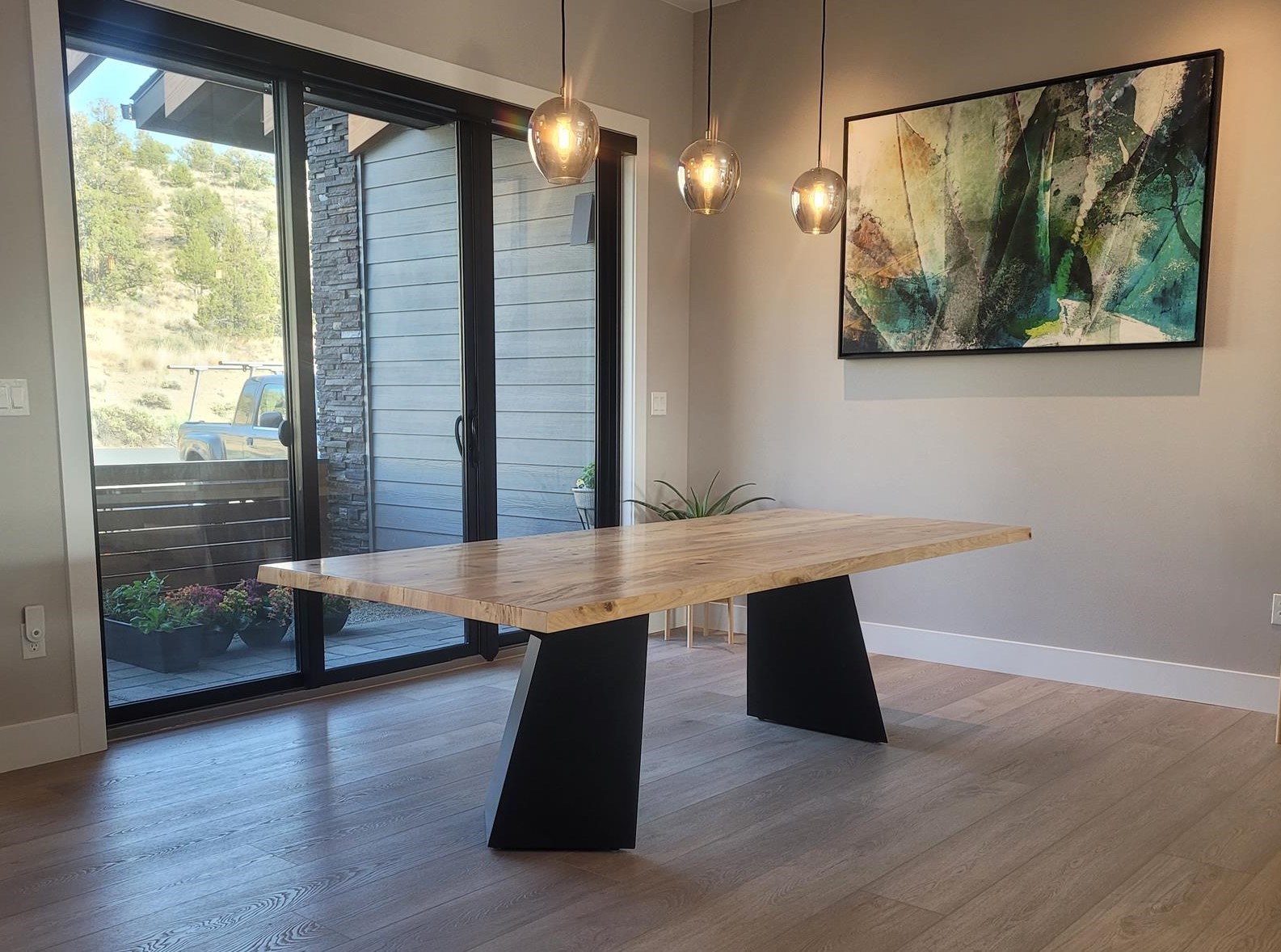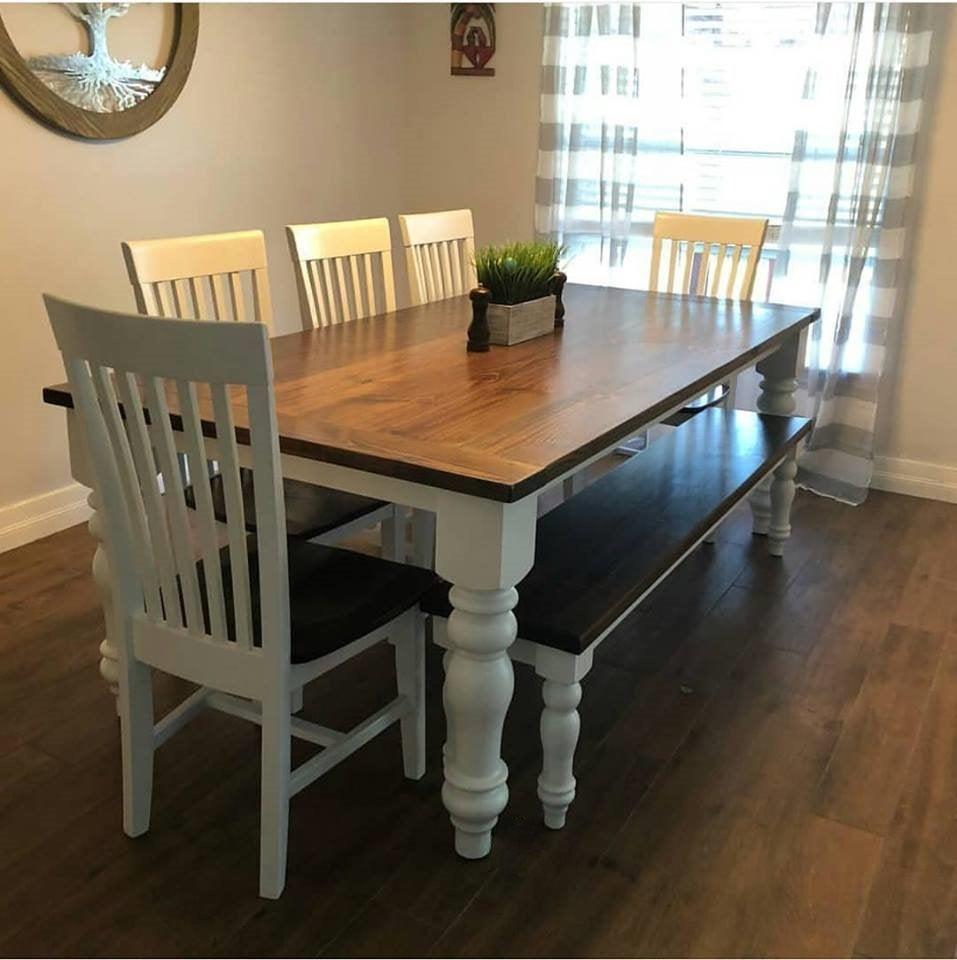How to Choose the Perfect Dining Room Table Legs for Your Home Design
How to Choose the Perfect Dining Room Table Legs for Your Home Design
Blog Article
Selecting the Perfect Dining Table: What Styles Job Best for Your Home?
Selecting the perfect table for your home can be a nuanced process that stabilizes appearances and performance. Whether your space leans in the direction of traditional sophistication, contemporary minimalism, rustic beauty, or industrial chic, the range of styles offered can deal with diverse tastes. Each layout provides one-of-a-kind benefits and obstacles that can either enhance or interrupt your eating area's consistency. Comprehending just how different products, forms, and sizes engage with your existing decor is critical. To navigate these selections efficiently and locate a table that truly matches your home, take into consideration the following elements thoroughly.
Analyzing Your Space
Assessing the dimensions and design of your eating location is a crucial initial step in choosing the excellent table. Begin by gauging the size and width of the room, making up doorways, windows, and other architectural features that could influence table placement. This guarantees that your table not only fits however likewise enables for comfy motion around it.
Think about the variety of people you commonly entertain. A table should accommodate your household's daily needs while offering enough adaptability for periodic guests. Generally of thumb, allot at the very least 24 inches of table size each to guarantee a comfortable dining experience.
It's also vital to maintain appropriate clearance around the table. Preferably, there need to go to least 36 inches in between the table edge and wall surfaces or other furniture, enabling very easy accessibility and motion. For rooms where chairs with arms or added storage units like buffets are entailed, boosting this clearance to 48 inches is a good idea.
Illumination and atmosphere play substantial functions. Ensure that your eating table lines up with existing lighting components or prepare for adequate lights services. This comprehensive spatial evaluation guarantees that your table not only fits physically yet also integrates with your space's total performance and visual.
Popular Table Styles

Standard eating tables commonly include elaborate details, curved legs, and abundant timber finishes, stimulating a feeling of ageless sophistication. They are ideal for homes with classic decor or those looking to include a touch of class to their eating location.
Modern dining tables prioritize simpleness and tidy lines, typically incorporating materials like glass and steel. These tables are suitable for modern spaces, providing a sleek and clean appearance that complements minimal style viewpoints.
Rustic table, on the various other hand, highlight natural products and a handcrafted appearance - dining room table legs. They usually feature reclaimed timber and a distressed finish, producing a warm and welcoming environment. These tables function well in farmhouse-style homes or those seeking a relaxing, organic feeling
Industrial dining tables incorporate resources such as metal and wood, frequently showcasing an utilitarian visual. This style is appropriate for lofts or metropolitan spaces, including a touch of rugged appeal and resilience to the dining experience.
Each design provides distinctive advantages, making it necessary to select one that straightens with your home's general layout and your individual preferences.
Material Selections
When choosing a table, the choice of material plays a crucial function in determining both the table's aesthetic appeals and functionality. Wood, steel, glass, and composite materials each offer special advantages and challenges, making it essential to line up the material with your home's decoration and lifestyle needs.
Timber is a classic and versatile option, offered in selections such as oak, walnut, and mahogany. Recognized for its sturdiness and heat, timber complements both conventional and contemporary insides. Nonetheless, it requires routine upkeep to protect against scratches and bending.
Metal tables, frequently crafted from stainless steel, aluminum, or functioned iron, are applauded for their modern charm and robustness. They are particularly suited for industrial or minimalist settings but can be prone to dents and may really feel chilly to the touch.
Glass eating tables bring an air of elegance and openness, suitable for smaller sized areas as they produce an illusion look these up of more space. While simple to tidy, glass can be prone to smudges and needs cautious handling to avoid chips and splits.
Composite products, such as MDF and plywood, deal economical and adjustable options, though they may lack the durability of all-natural materials. Selecting the right material guarantees your eating table is both a practical asset and an aesthetic joy.
Sizes And Shape Considerations
After determining the appropriate product for your table, the next factor to consider is picking the best sizes and shape to fit your space. The form of the table dramatically affects the room's visual and performance. Rectangular tables, one of the most typical shape, are ideal for larger areas and can accommodate a greater number of visitors. They additionally enable for a more official dining experience. Alternatively, rounded tables foster a feeling of intimacy and are superb for smaller sized dining locations, encouraging discussion look these up by eliminating edges and making everyone really feel equally consisted of.
As a policy of thumb, designate at the very least 24 inches of table size per individual to make sure comfortable eating. In addition, consider the table's clearance space: there ought to be at least 36 inches between the table side and the walls or other furniture. Extending tables provide flexibility if you frequently host bigger celebrations, giving added seats when needed without occupying extra room daily.
Matching Your Style
Picking a dining table that integrates with your existing design is crucial in creating a natural and inviting area. A streamlined, minimalist table with clean lines is excellent for a contemporary home, while a vintage, luxuriant table suits an extra conventional his response setup.
Shade and material are similarly significant. If your design includes cozy tones and natural materials, take into consideration a wooden table to improve the natural feeling. Conversely, a glass or metal table might be better in a space controlled by awesome shades and commercial components. Take note of the surface, as it must mirror various other furnishings and fixtures to maintain harmony.
Structure plays a vital duty too. A rough-hewn, reclaimed wood table can include personality to a rustic area, while a sleek marble surface area can boost an elegant dining area. Take into consideration the range and proportion of the table in relation to the room dimension and existing furnishings. A well-matched eating table not just improves visual appeal yet additionally enhances the general dining experience.

Verdict
Choosing the perfect dining table necessitates careful consideration of space, design, products, form, and dimension. Standard tables complement traditional interiors with rich wood finishes, while modern-day tables match modern setups with glass and metal.
Report this page